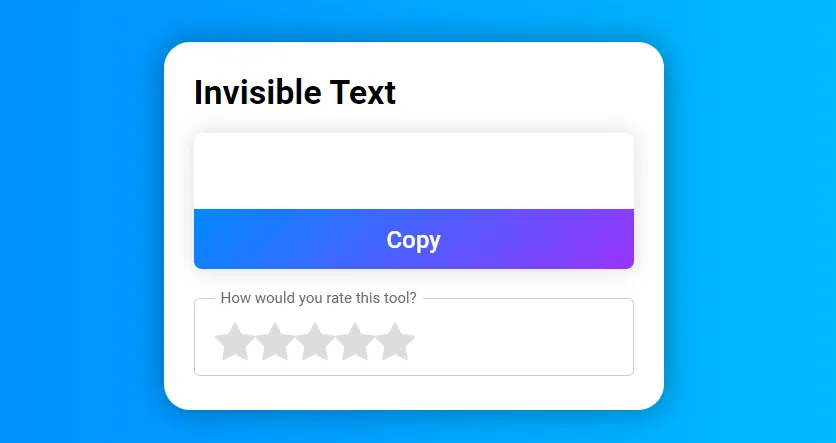How to Create and Use Invisible Letters for Formatting?
Invisible letters, also known as blank characters or zero-width spaces, are special Unicode characters that do not visibly appear in the text but still occupy space. These characters can be useful for formatting, hiding text, creating unique usernames, and even bypassing text restrictions in certain apps. In this article, we will explore what invisible letters are, how to generate them, and practical ways to use them.
What Are Invisible Letters?
Invisible letters are characters that do not have a visible form when displayed. These characters are part of the Unicode standard and are often used in digital communication. Some of the most common invisible characters include:
- Zero Width Space (ZWSP): U+200B
- Zero Width Non-Joiner (ZWNJ): U+200C
- Zero Width Joiner (ZWJ): U+200D
- Non-Breaking Space (NBSP): U+00A0
Each of these characters functions differently. For example, the Zero Width Space (ZWSP) creates a break in the text without showing any visible gap, while the Non-Breaking Space (NBSP) adds a space that prevents line breaks.
How to Generate Invisible Letters
You can generate invisible letters using different methods:
1. Copy and Paste
One of the easiest ways to use invisible letters is by copying them from a reliable source. Here is an invisible character (Zero Width Space): . You can copy it from here and paste it wherever needed.
2. Using Character Map (Windows) or Character Viewer (Mac)
If you are using a computer, you can find invisible characters in the character map tool:
- On Windows, open the Character Map app, search for Unicode characters like U+200B, and copy it.
- On Mac, open the Character Viewer by pressing Control + Command + Space, then search for the invisible character.
3. Using Online Unicode Generators
There are various online tools that allow you to generate and copy invisible characters. Just search for “invisible text generator” online and select a reliable tool to copy the characters.
Common Uses of Invisible Letters
Invisible letters are useful in different contexts. Here are some of their common applications:
1. Formatting Text
In certain text editors, adding invisible characters can help in structuring text where normal spaces might not work. This is useful in designing clean layouts for documents and websites.
2. Creating Unique Usernames
Many platforms do not allow usernames with only spaces. However, by adding invisible characters, you can create a username that appears blank or unique, making it harder to duplicate.
3. Bypassing Word Restrictions
Some social media platforms and games restrict certain words from being used in usernames or messages. Adding an invisible character within a restricted word can sometimes bypass these filters.
4. Sending Empty Messages
On apps like WhatsApp, Telegram, and Messenger, you normally cannot send blank messages. However, by using an invisible letter, you can trick the app into thinking there is text, making the message appear empty.
5. Organizing Lists or Indentation
If a platform does not support traditional spaces for indentation, invisible characters can be used to create structured formatting without breaking the text.
Potential Issues and Considerations
While invisible characters are useful, there are some things to keep in mind:
- Compatibility Issues: Not all applications recognize invisible characters, and some may automatically remove them.
- Misuse: Some people use invisible letters to trick users or bypass security measures, which may lead to account restrictions.
- Copy-Paste Errors: If you accidentally copy an invisible character, it may cause confusion when pasting text elsewhere.
Conclusion
Invisible letters are powerful tools that can be used for formatting, creating unique usernames, and more. Whether you are looking to bypass restrictions, organize your text better, or simply have fun with digital communication, knowing how to generate and use these characters can be highly beneficial. Just be mindful of potential issues and use them responsibly!








